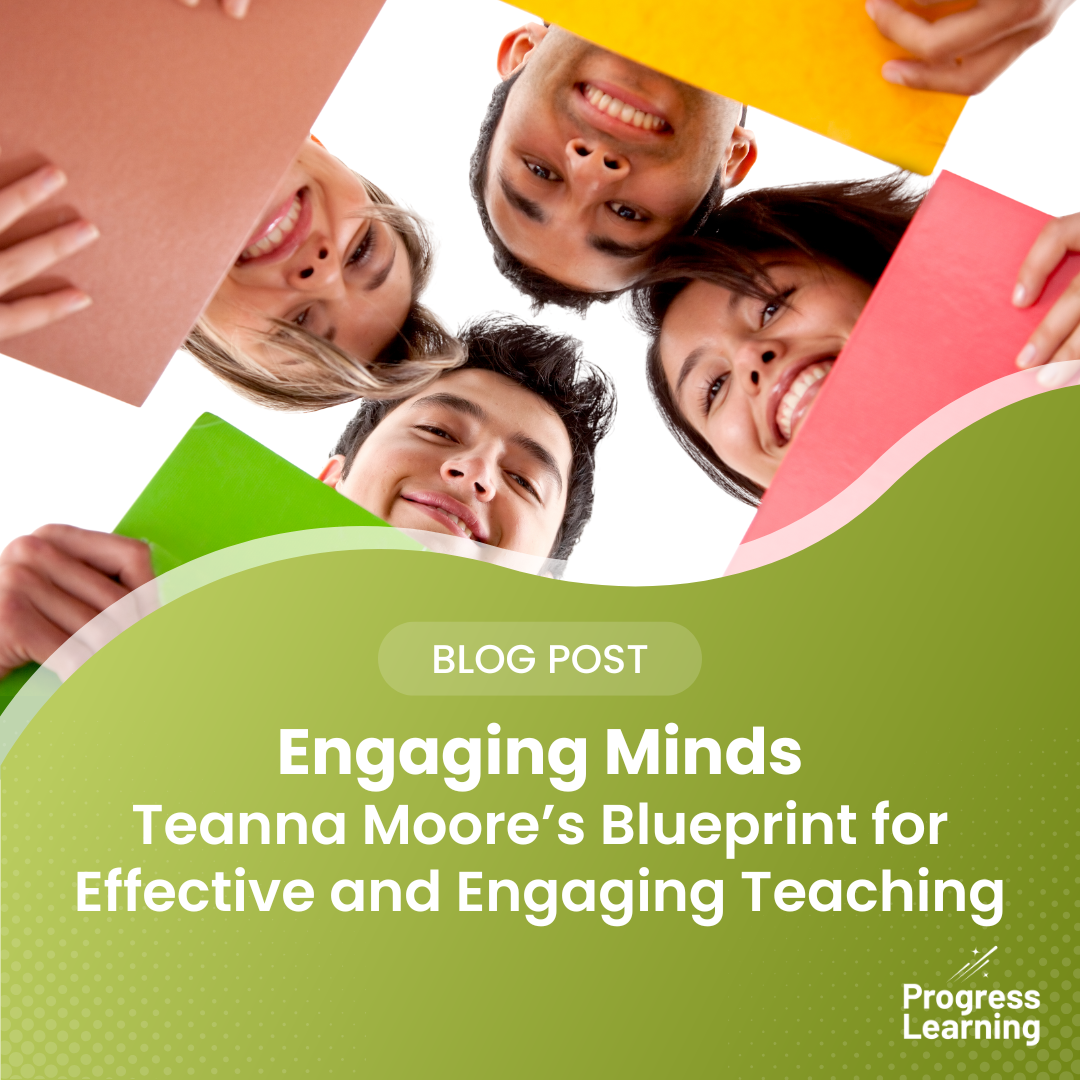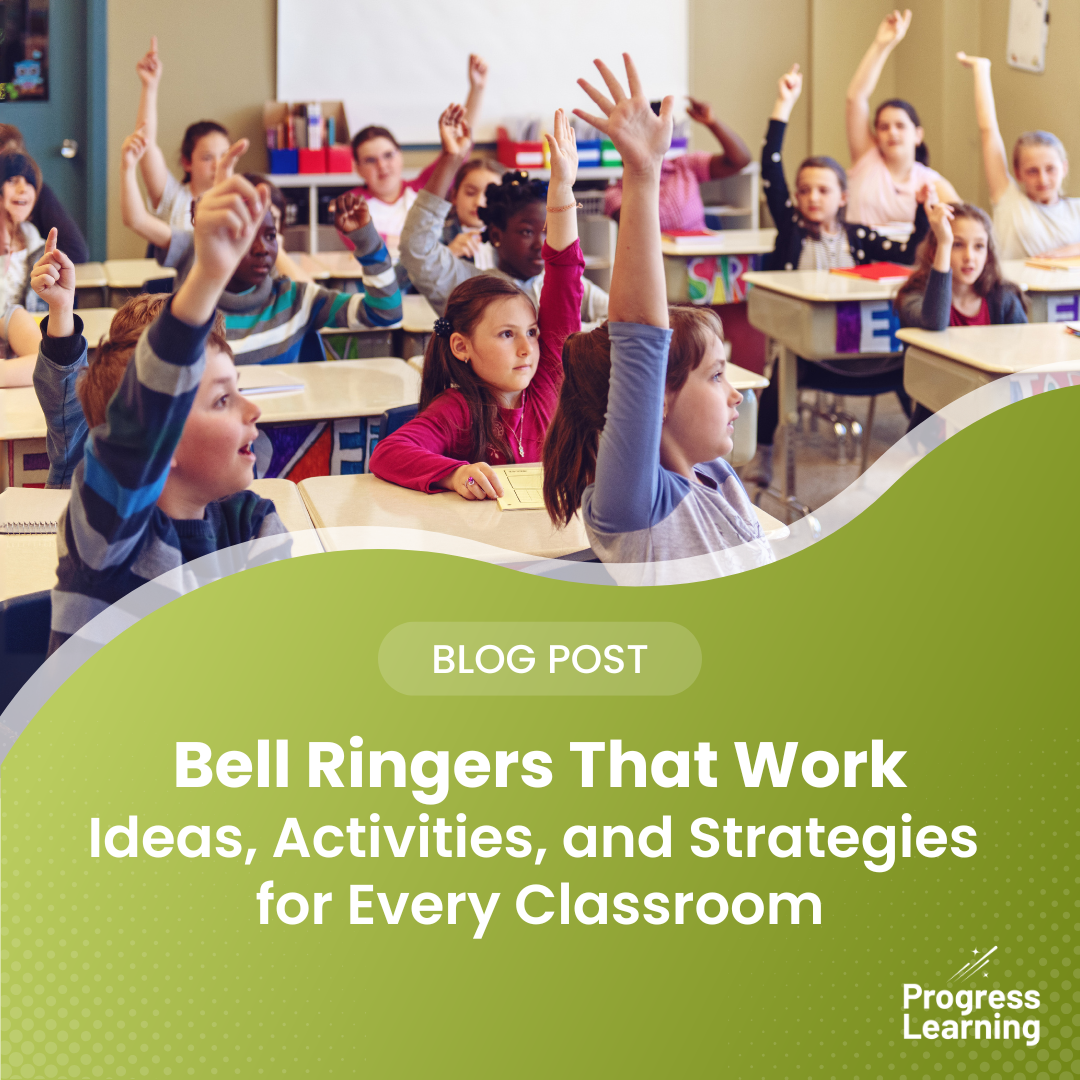How to Increase Student Engagement: Tips, Activities, and Strategies for Teachers
Primarily written by Dr. Sandra Markowitz, an experienced educator with 17 years in the field of Instructional Technology. Passionate about assistive technology, Universal Design for Learning, instructional strategies, and workflow solutions, Sandra brings innovative approaches to her teaching. Additional commentary about engagement around holidays and the end of the school year has been added by academic experts at Progress Learning.
Teachers today face an ongoing challenge: captivating student attention and fostering meaningful learning experiences — a task that is often easier said than done.
As we navigate the complexities of online learning, which have been exacerbated by the COVID-19 pandemic, finding ways to increase student engagement becomes more crucial. But fear not, dear educators, for in this digital age, we possess an arsenal of strategies and activities to tackle this challenge head-on.
Let’s take a look at the importance of student engagement and strategies you can use to boost it all year long.
Why Is Student Engagement So Important?
Before diving into strategies, let’s first understand why student engagement is so important. Engaged students are active participants in their learning journey, exhibiting higher levels of motivation, concentration, and retention. They are more likely to develop critical thinking skills, problem-solving abilities, and a deeper understanding of the subject matter. Increased engagement also fosters a positive classroom environment, paving the way for collaborative learning and nurturing a sense of belonging among students.
Why Is Increasing Engagement a Challenge?
Despite the importance of student engagement, it remains a difficult task. The traditional one-size-fits-all approach often fails to resonate with a diverse group of learners, leading to disinterest and disengagement.
Factors such as digital distractions, lack of face-to-face interaction, and limited personal connection pose significant barriers for educators. There is no universal solution for every student, every teacher, or every classroom. Educators need to be equipped with a variety of strategies they can explore according to their unique situation.
Strategies to Increase Student Engagement
Let’s take a look at some strategies that you can use to boost engagement in your classrooms. Remember, every classroom is different, so it’s important to explore different strategies and find what works best for you and your students.
- Promote autonomy and choice: Giving students choices and control over their learning can significantly boost motivation and engagement. For example, allowing students to choose from a selection of topics for a research project or offering flexible deadlines empowers them to take ownership of their learning journey. Consider offering various learning pathways, self-paced models, and choice boards to cater to individual interests and needs. These tools also enable students to explore topics at their own pace.
- Emphasize mastery: Creating opportunities for students to develop and demonstrate their skills can fuel their motivation. Incorporating scaffolded learning activities that gradually increase in complexity allows students to build confidence and competence in various subjects. This approach helps students feel more accomplished as they master new concepts.
- Connect classroom learning to the real world: Linking classroom lessons to real-world relevance can significantly boost student engagement. For instance, discussing current events or integrating students’ personal interests into lessons can highlight the practical applications of academic concepts. This connection inspires students to engage more deeply with the material and see its relevance in their lives.
- Cultivate personal connections: Establishing strong relationships with your students is key to enhancing their engagement. Schedule regular one-on-one check-ins to provide feedback, address concerns, and build rapport beyond the classroom walls. Encourage peer-to-peer interactions through group projects, study groups, and collaborative brainstorming sessions. Sharing personal stories, real-world experiences, and relevant anecdotes can make learning more relatable and engaging.
- Harness the power of technology: Educational technology tools, like Progress Learning, can create immersive learning experiences that captivate students. Interactive tools like whiteboards, virtual reality simulations, and augmented reality applications can enhance lessons. Virtual field trips can also supplement traditional instruction and spark curiosity. Finally, gamification elements such as leaderboards, badges, and rewards can create a sense of completion and motivation.
Strategies to Increase Student Engagement Over the Holiday Break and at the End of the School Year
Engagement often fluctuates throughout the school year, especially during holiday breaks and the final months of school. How can educators maintain momentum during these critical times?
Let’s start with strategies for the holiday break. As students leave the structured environment of school to go home for the holidays, keeping them engaged in learning can seem impossible. However, with a little planning, educators can ensure students continue to learn while having fun. Here are some ways to make the holiday break both enjoyable and educational:
- Put together an action plan for the entire break: Planning is key to ensuring that the holiday break is productive and enjoyable. Instead of leaving things to chance, put together a structured plan that includes various activities and learning opportunities.
- Set achievable goals: These goals could include reading a certain number of books, completing a project, or practicing a new skill. Make sure these goals are realistic and suitable for the age and ability of the child. It’s also a good idea to incorporate incentives and rewards — these can be amazing motivators.
- Make goal setting collaborative: Goal setting shouldn’t be a solo task assigned by the teacher, it should be a collaborative process that involves the student. For younger children, this might mean selecting books to read from a pre-approved list. Older students might be invited to propose their own projects or study plans.
- Engage with technology and digital resources: Digital resources and technology offer a wealth of opportunities for interactive learning at home. Encourage students to use educational apps that cater to their interests and learning levels.
- Create a family challenge that everyone can participate in: This could be a reading challenge, a science experiment, or even a cooking challenge. The key is to choose something that everyone can participate in, regardless of age or ability. This not only promotes learning but also fosters a spirit of teamwork and collaboration.
- Encourage creative expression through arts and crafts: Arts and crafts stimulate students’ creative thinking and enhance their fine motor skills. For younger students, this could include painting a picture or creating holiday-themed crafts. For older students, this could be writing short stories or poems.
- Recommend educational documentaries and books: Educational documentaries and books cover a wide range of topics from science to history to culture. These can be a great way to engage students in learning while they’re at home for the holidays.
Now, let’s move on to strategies for the end of the school year. Warmer weather, end-of-year events, and the anticipation of summer break can cause attention to drift. Yet, the final stretch is crucial for reinforcing learning and ensuring students finish strong. Here are a few tips to help with this time of year:
- Set clear expectations: Lay out clear, achievable goals and expectations for the last assignments and activities of the year. Setting clear expectations allows students to understand why they are completing a task and how much effort they need to put into it.
- Offer engaging activities: Incorporate activities that cater to different learning styles. If you have visual learners in your class, try using charts or diagrams to illustrate concepts. If you have auditory learners, try listening exercises or discussion-based activities. You can also use technology to create interactive digital lessons or assignments that will help keep students actively engaged during the lesson.
- Set goals together: Work with your class to set individual goals for each student and then come up with ways they can accomplish those goals together as a group (i.e., reading extra books in their free time). This will help create a sense of community and collaboration among your students while giving them something tangible to work towards throughout the rest of the year. Progress Learning offers free goal-setting templates, which make this process easy.
- Provide positive feedback: This will motivate students and encourage them to keep putting forth their best effort, even as spring fever sets in. Progress Learning’s Video Explanations are a great way to provide positive constructive feedback when a student gets a question incorrect.
- Use online educational technology: Progress Learning activities and assessments are an effective way for teachers to engage their students during these final months of the school year. Features like games and avatars can add an element of fun during this critical time and keep them motivated.
Measuring and Tracking Engagement
Once you implement strategies to boost engagement, the next step is to evaluate their effectiveness. That’s where measuring and tracking come in.
When it comes to measuring student engagement, we need to look at both the students’ actions and thoughts. From an educator’s perspective, we have a few different ways to measure student engagement:
- Attendance rates: Regular attendance is a foundational indicator of student engagement. Rostering tools and attendance tracking systems can provide real-time data on students’ presence. Educators can identify patterns and intervene early if students are frequently absent, ensuring they stay connected and engaged in the learning process.
- Participation levels: Active participation is a strong indicator of students’ involvement and interest in the subject matter. Tools such as interactive polling software, group collaborations, chat functions, and peer-to-peer interactions can assist teachers in identifying engagement disparities among students and tailor inventions to foster a more inclusive learning environment.
- Task completion rates: Task completion rates reflect students’ commitment to learning and their ability to stay on track with assignments and assessments. Progress Learning enables teachers to assign tasks, set deadlines, and monitor completion rates in real time.
- Student feedback: In addition to behavioral measures, it’s equally important to solicit feedback directly from students to gain insights into their learning experiences and preferences. Tools like surveys, peer evaluations, and reflective journals empower students to voice their opinions and contribute to the co-creation of a supportive learning environment.
- Data and analytics: Using data analytics tools can provide valuable insights into student engagement patterns and trends. Progress Learning’s data reporting enables educators to track areas of improvement and measure the effectiveness of interventions.
Troubleshooting and Adaptation
There will be times when, despite our best efforts, certain strategies fail to yield the desired results. During such moments, it’s crucial for educators to adopt a growth mindset and embrace a culture of continuous improvement.
Rather than viewing setbacks as failures, see them as opportunities for learning and growth. Engage in reflective practice, seek feedback from students, colleagues, and educational experts, and be willing to iterate and refine your approach based on feedback and insights.
The quest to increase student engagement is both a challenge and an opportunity for educators. By embracing innovative strategies, using educational technology, and creating a culture of student-centered learning, teachers can empower students to become active participants in their educational journey. Remember, the key lies not in a one-size-fits-all solution but in offering adaptive approaches that meet the diverse needs and interests of all learners.
Looking for a solution that can boost engagement in your classroom or school? Request a demo of Progress Learning today.


